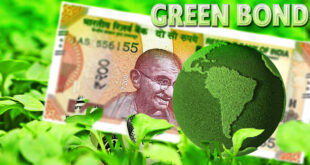India and Malaysia have agreed to settle trade in the Indian rupee which indicates that India is willing to take concrete steps towards de-dollarisation of its international trade.
Key details:
- The Union Bank of India has become the first bank in India to operationalise this option by opening a Special Rupee Vostro Account through its corresponding bank in Malaysia, India International Bank of Malaysia.
- Trade between India and Malaysia can now be settled in Indian Rupee (INR) in addition to the current modes of settlement in other currencies.
- This initiative by RBI is aimed at facilitating the growth of global trade and to support the interests of the global trading community in Indian rupees.
- Trading in the U.S. dollar has faced growing difficulties, especially after the Russian economy was sanctioned by the Western powers.
- As a fallout of the sanctions and war-making, payments to Russia in U.S. dollars became increasingly difficult, which in turn triggered a search for solutions in national currencies and de-dollarisation worldwide.
India-Malaysia Trade:
- The India-Malaysia bilateral trade touched $19.4 billion during 2021-22.
- Malaysia is the third largest trading partner of India in the ASEAN region, after Singapore and Indonesia that account for $30.1 billion and $26.1 billion bilateral trade with India respectively.
What is de-dollarization?
- This refers to the process of reducing the reliance on the US dollar as a means of international trade and investment and moving towards using their own currencies or other alternatives.
- With the ongoing Russia-Ukraine conflict, many countries are beginning to explore the possibility of moving away from the dollar for trade purposes, raising concerns about the future dominance of the currency.
Fall in IMF reserves:
According to the IMF’s Currency Composition of Official Foreign Exchange Reserves (COFER) survey the share of reserves held in U.S. dollars by central banks fell from 71 percent in 1999 to 59 percent in 2021.
Why de-dollarization?
Averting risks:
- The de-dollarisation by several central banks is imminent, driven by the desire to insulate them from geopolitical risks, where the status of the US dollar as a reserve currency can be used as an offensive weapon.
- Thus, the war in Ukraine and the subsequent economic sanctions will trigger central banks to reassess their dependency on the greenback.
A new payment system:
Efforts are already underway for the possible introduction of a new Russia-China payment system, bypassing SWIFT and combining the Russian SPFS (System for Transfer of Financial Messages) with the Chinese CIPS (Cross-Border Interbank Payment System).
Multipolarity:
The notion of de-dollarisation sits well in the thought experiment of a multipolar world where each country will look to enjoy economic autonomy in the sphere of monetary policy.
Which countries are de-dollarizing?
- Leading geopolitical adversaries of the US — Russia and China — have already started this process of de-dollarisation.
- Other smaller powers are also joining the ranks.
- India has also had to work out alternative arrangements, including a barter arrangement, with certain sanctioned countries in the past.
What Russia has done in this direction?
- Russia had started its three-pronged efforts towards de-dollarisation in 2014 when sanctions were imposed on it for the annexation of Crimea.
- Russia reduced its share of dollar-denominated assets to about 16 per cent in 2021.
- It reduced its share of trade conducted in USD by prioritising national currencies in bilateral trade.
- The use of USD in Russia’s exports to BRICS crashed from about 95 per cent in 2013 to less than 10 per cent in 2020.
- Russia also developed a national electronic payments system called “Mir” in 2015 after several payment processing firms denied services to Russian banks.
What China has done in this direction?
- China aims to use trading platforms and its digital currency to promote de-dollarisation.
- China has established RMB trading centres in Hong Kong, Singapore and Europe.
- In 2021, the People’s Bank of China submitted a “Global Sovereign Digital Currency Governance” proposal at the Bank for International Settlements to influence global financial rules via its digital currency, the e-Yuan.
- The IMF has already added Yuan to its SDR (Special Drawing Rights) basket in 2016.
- In 2017, the European Central Bank exchanged EUR 500 million worth of its forex reserves into Yuan-denominated securities.
- However, the lack of full RMB convertibility will hinder China’s de-dollarisation ambition.
- Despite these efforts, the US dollar continues to reign, having sealed its position in the early 1970s with a deal with the oil-rich Kingdom of Saudi Arabia to conduct global energy trade in dollars.
- The status of the dollar was enhanced by the collapse of the Bretton Woods system, which essentially eliminated other developed market currencies from competing with the USD.
- This status of the reserve currency allows the US government to refinance its debt at low costs in addition to providing foreign policy leverage.
Way forward
- Currently, about 60 per cent of foreign exchange reserves of central banks and about 70 per cent of global trade is conducted using USD.
- The association of the USD as a “safe-haven” asset also has a psychological angle to it and like old habits, people continue to view the currency as a relatively risk-free asset.
- Given this psychological bias, the world will continue to prefer the USD as a “store of value” and a “medium of exchange”, fulfilling the basic functions of money.
- Additionally, sudden dumping of dollar assets by adversarial central banks will also pose balance sheet risks to them as it will erode the value of their overall dollar-denominated holdings.
- Thus, despite triggers to the move away from the dollar, in reality, it will be a protracted process.
- Central banks are left with very few choices to diversify.
SOURCE: THE HINDU, THE ECONOMIC TIMES, PIB
 Chinmaya IAS Academy – Current Affairs Chinmaya IAS Academy – Current Affairs
Chinmaya IAS Academy – Current Affairs Chinmaya IAS Academy – Current Affairs


